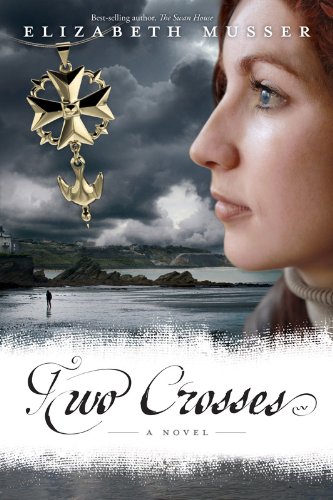Two Crosses | Two Testaments
Two Crosses begins the unforgettable story of several characters in a saga that stretches across opposite coasts of the Mediterranean Sea. The racism plaguing Algeria’s people as they fight for independence from France creates a chasm in the early 1960s that spins uncontrollably.
Teacher and student, David and Gabriella meet at a Franco-American exchange program. Mother Griolet manages the operation along with an orphanage, which doubles as the cover of a rescue mission in France. Gabriella helps David with the dangerous operation of transporting orphaned children whose family were victims of the Algerian war. David’s own past reemerges as his daughter Ophélie arrives on Gabby’s doorstep, epitomizing the stolen innocence of the children due to wartime treachery. Gabby and Ophélie bond immediately; they proudly wear their Huguenot crosses close to their hearts, which becomes symbolic and healing even as David tries to reconcile his own questions of faith with the horrors of the war he has witnessed. Gabby’s relationships with the women in the school and the orphanage are also an integral part of the story as she slowly realizes her calling in life.
Book Two seamlessly picks up the story from Two Crosses, as there is no clear divide between them. These books are definitely meant to be read in order, and the characterizations and the consequences of the war are as splendidly portrayed as in the first book.
Two Testaments continues with the aftermath of Algerian independence, as David befriends a Muslim friend and they question their faiths together. Although the war is supposed to be over, people have been forced to split and choose sides. The pieds-noirs were French citizens, unwanted after being forced from Algeria; the Harkis were Muslim soldiers who once fought alongside Arabs but found themselves unwelcome in the newly independent Algeria. Two Testaments tells the story of the pieds-noirs and the Harkis through several characters in a way that evokes tears because of the violence and tragedy. Yet there was always hope, and victory for some, death for others, and insecurity for the rest.
The plot is a well-written composition that teaches a little about life during tragic times, it is moving and emotive as the characters reach for understanding through a higher power. There is a daunting set of names and places at first, but they are threaded together carefully throughout the story. Both of these novels explore deep themes such as prejudice, God, love, sacrifice, and hope, but these words just skim the surface of its potential to touch the reader. Book Three, Two Destinies, picks up the saga of these families 30 years later as war yet again becomes unavoidable.










